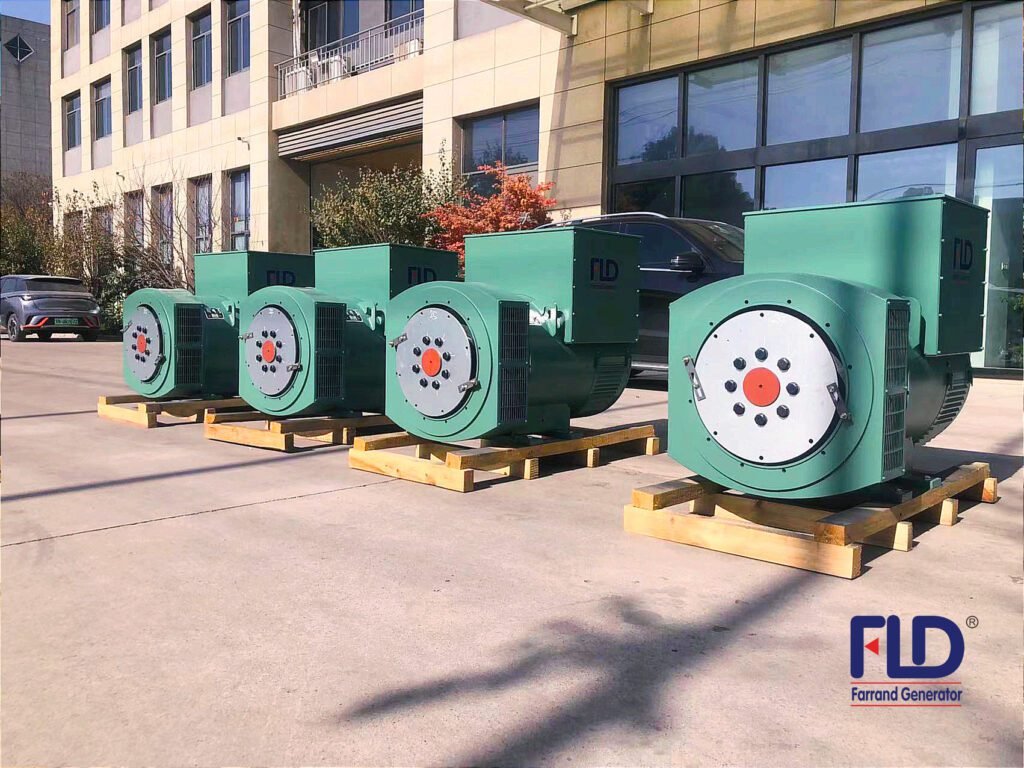What Is the Difference Between AC Generator and DC Generator?
Farrand Generator produces brushless AC generators. Today, we will briefly share with you the differences between AC generators and DC generators.
What is an AC generator?
An AC generator is an electromechanical device that converts electrical energy in the form of AC voltage and current into mechanical energy. There are different types of AC generators, which can be divided into induction generator (asynchronous) or synchronous generator, Farrand produces synchronous generator and contain stators and rotors. Induction generators can be single-phase or poly phase, while synchronous generators include reluctance generators and hysteresis generators.
What is a DC generator?
A DC generator converts electrical energy supplied in the form of direct current into mechanical rotational energy. The same device can be used in reverse to generate direct current from the rotation of the generator shaft. When used in this manner, the device acts as a generator. There are several main types of DC generator available. These include permanent magnet DC generators, series DC generators, shunt DC generators, composite DC generators and brushless DC generators.

What is the difference between Ac generator and DC generator?
While both AC and DC generators produce mechanical energy in the form of a rotating generator shaft, there are some key differences:
Input power
AC generators operate on an input electrical signal, which is alternating current and voltage, and its amplitude and direction change as the input AC waveform completes a cycle. AC generators can be run from a single-phase power supply or from a poly phase power supply with multiple voltage inputs operating at different phase angles from each other (usually 120° or 2π/3 in the case of a three-phase power supply radians). DC generators are powered by unidirectional current (current that does not change direction over time) from a DC source. The universal importance of AC power means that when using DC generators it may be necessary to convert to DC power, for example using an AC-DC converter or DC power supply.
Magnetic field
In a polyphase AC generator, when alternating current is supplied to the stator coils, a rotating magnetic field or RMF is produced, which produces an EMF in the rotor coils through Faraday’s law of induction. This electromotive force creates a current in the rotor and exerts a net torque, causing the rotor to rotate, and the Jiangsu Farrand Generator also produces a rotating magnetic field. Induction generators exhibit a phenomenon called slip, in which the speed of the rotor (N r ) is less than the synchronous speed of the stator’s rotating field (N s ). The mathematical expression of slip is:

In a DC generator, permanent magnets or a set of field coils produce a non-rotating magnetic field. Electric current is supplied to the coils of the armature, causing the armature to rotate.
Direct and indirect connection design
For AC generators, Jiangsu Farrand generators simply energize the stator coils by connecting directly to a multi-phase AC power source to produce rotor rotation. The principle of electromagnetic induction generates an electric current in the rotor without the need for a direct electrical connection.
For a DC generator, current needs to be supplied to the stationary field coil (unless permanent magnets are used) and the armature. To achieve this, brushed DC generators use a set of spring-loaded carbon brushes that press against a commutator ring that carries current to the armature and field coils as the armature rotates. . Depending on whether the field coil connection is made in parallel with the armature coil (shunt generator) or in series with the armature coil (series wound generator, the resulting DC generator configuration will exhibit different performance characteristics.
